Features and cultivation of roses of the variety "Nina Weibul"
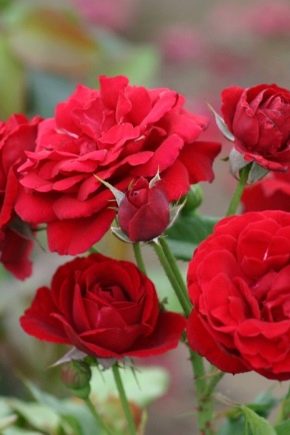
When choosing roses to decorate the local area, most gardeners prefer varieties that are undemanding to care for, capable of boasting impressive decorativeness. One of these is "Nina Weibul" - a spectacular floribunda that can be grown both by specialists and people with a minimal set of skills. Noteworthy are other features of the described rose, the combination of which fully justifies its high popularity.
Description
Like other floribundas, the variety in question is the result of crossing polyanthus and hybrid tea roses, which endowed it with unpretentiousness and aesthetic appearance of the buds, respectively. It owes its appearance to the specialists of the famous Danish company Poulsen, who presented it in 1962.
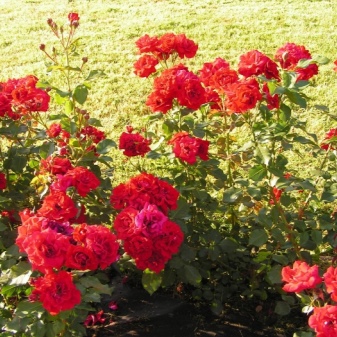
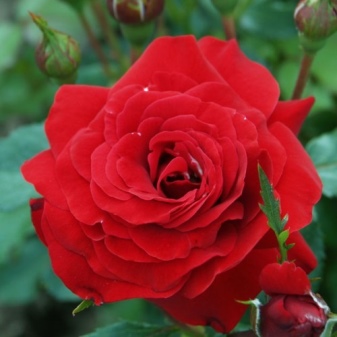
Rose "Nina Weibul" has the following features:
- a neat perennial bush that grows up to 90 cm in height and up to 55 cm in width;
- double flowers with a rich dark red hue and reaching 6 cm in diameter;
- dark green leaves with a shiny surface;
- the presence of thorns on the stems;
- arrangement of flowers in brushes of up to 10 pieces in each (in some cases, there are twice or even three times large bouquets);
- winter hardiness zone - IV (USDA).
Important! If the pruning of the shoots of the described rose is performed at different heights, its flowering lasts throughout the summer. As a rule, it begins in the second decade of June and ends in late autumn, with the arrival of the first frosts.
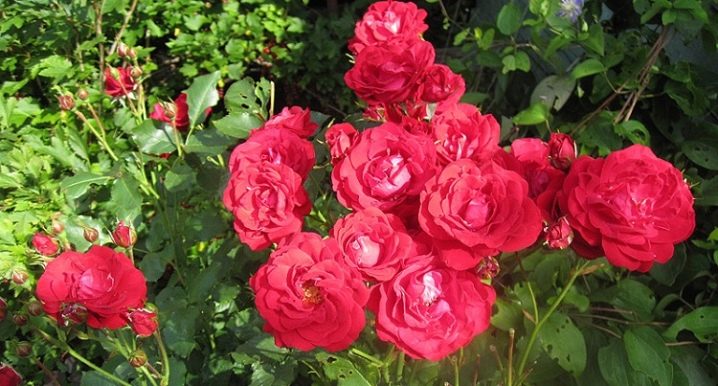
Advantages and disadvantages
Experience shows that "Nina Weibul" fully justifies its belonging to the Floribunda. The Latin name of this group of roses indicates abundant flowering - a quality that is one of the main advantages of the described Scandinavian variety. Such obvious advantages of the presented variety deserve mention, such as:
- good winter hardiness, allowing you to painlessly endure severe frosts;
- minimal susceptibility to black spot and powdery mildew, due to which the plant does not need frequent preventive treatments;
- the possibility of mass planting, which is facilitated by the flowering of a rose at the same height;
- adaptation to various growing conditions, including those far from optimal.
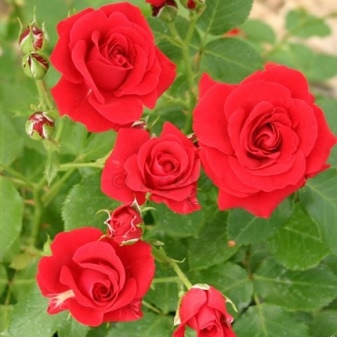
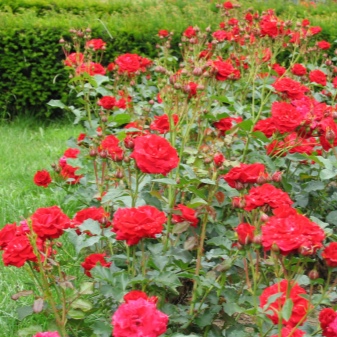
Important! In addition, the flowers of "Nina Weibul" are resistant to rain and hardly fade in the sun, which allows them to maintain a high decorative effect throughout the season.
The most noticeable disadvantage of the floribunda in question is the large number of thorns, which greatly complicates the care of the rose and its use in cutting. Another drawback of the variety is the almost complete absence of aroma, which connoisseurs of highly fragrant plants cannot accept.
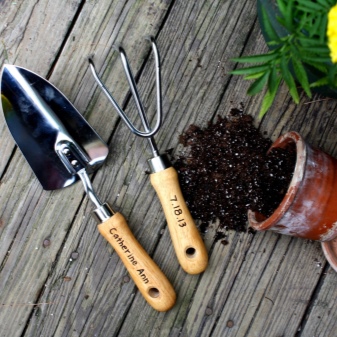
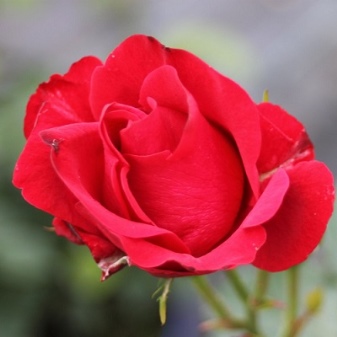
Seat selection
For the successful cultivation of the "Nina Weibul" rose, the owner of the plot needs to decide on a suitable place for planting it. To solve this problem, it is enough to take into account the following simple recommendations:
- one of the key conditions contributing to the full development of the bush is an abundance of sunlight; if planting is carried out in a region with hot summer, the rose must be positioned so that direct rays do not fall on it at lunchtime;
- "Nina Weibul" should be located at a considerable distance from large bushes and trees;
- planting a plant on a hill or in a lowland should not be, which is explained by the effect of a strong wind in the first case and stagnant moisture in the second; and experts also advise avoiding places used for growing roses for 8-10 previous years in a row.
Important! As for the soil that is optimal for the described floribunda, it should be fertile, brought to a normal water balance and having a pH of 5.6 to 7.3. If the soil does not meet this condition, ash and lime are used to reduce its acidity, and manure and peat are used to increase it.

Landing
It is advisable to start the procedure in question in May, when the soil warms up quite well. First of all, you need to prepare a hole for a young plant, the diameter of which should be 50 cm, and the depth - about 40 cm.To fill the hole, a combination of upland soil, humus, peat and river sand, mixed in equal proportions with the addition of phosphorus fertilizers and bone meal. In addition, you should pay attention to the arrangement of the drainage layer of gravel or pebbles.
Before planting, the healthy roots of a young plant are shortened, leaving about 30 cm in length, and diseased and damaged ones are removed. It is also desirable to cut off the shoots - up to about 35–40 cm. It is also necessary to immerse the roots in water with a biostimulant dissolved in it for 24 hours, after which the Nina Weibul rose is ready for planting.
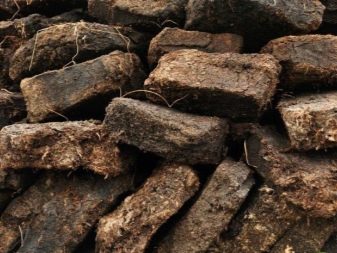
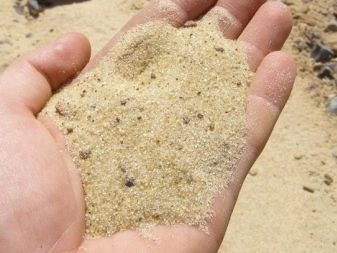
The further sequence of actions is as follows:
- place the seedling in the central part of the pit;
- deepen the young plant so that the grafting site (if any) is 2 cm below the earth's surface;
- carefully distribute the roots of the rose along the bottom and cover them with soil, carefully compacting it;
- water the seedling with plenty of water;
- in the end, it remains to mulch the trunk circle using sawdust, humus or peat.

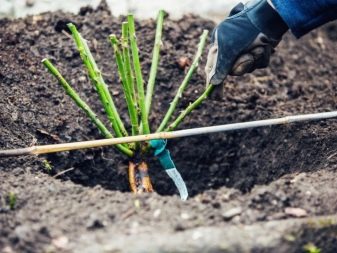
Care
In order for "Nina Weibul" to please with a long and spectacular flowering, it is necessary to take care of it properly, adhering to the recommendations listed below.
Watering
The rose in question does not tolerate stagnant moisture well, so it should not be watered abundantly. As for the frequency of this procedure, in most cases, once every 5-7 days is enough. With the onset of extreme heat, "Nina Weibul" is watered once every 2-3 days, taking into account the rate of drying of the earthen coma. Particular attention should be paid to young representatives of the described variety. Such plants need more frequent watering than adult roses, due to the weakness of their root system.
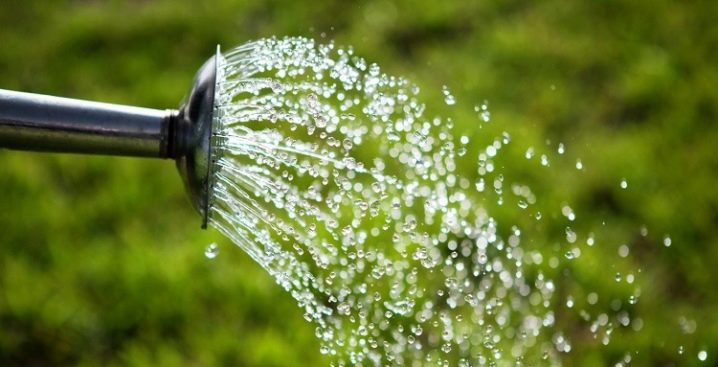
Top dressing
The grown floribunda will develop at maximum speed, provided that the necessary fertilizers are applied on time, performed according to the following scheme:
- nitrogen fertilizing - a decade after spring pruning and during the formation of buds;
- organic - just before the start of flowering;
- phosphorus and potash fertilizers - in late autumn to better prepare the plant for winter.
An alternative option is two-time feeding, which involves the introduction of nitrogen fertilizers in the spring, and potash and phosphorus fertilizers in the summer. The first action is carried out before the buds appear, and the second - when they have already gained color.
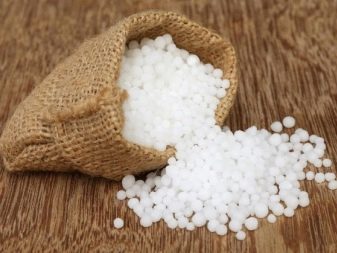

Pruning
Carrying out the described procedure in the spring involves the removal of problem stems, after which only the healthiest shoots should remain on the bush. To accelerate the flowering of "Nina Weibul", it is necessary to leave 5-7 buds on each branch, and to rejuvenate the plant - about half as much. The first option is called medium pruning, and the second is called strong. During the summer, the owner of the rose needs to get rid of dried shoots and faded buds, thereby stimulating its re-flowering.With the onset of autumn, it remains to give the bush the correct shape, which is achieved by shortening too long stems and removing improperly growing stems.
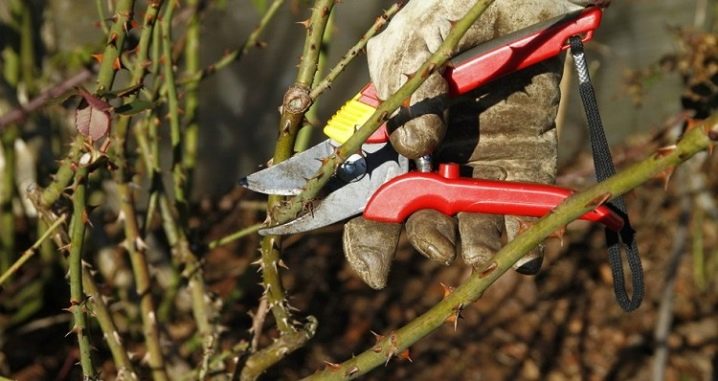
Preparing for winter
If the rose "Nina Weibul" is grown in the middle lane or colder regions, she needs a reliable winter shelter. Its construction should be started in the absence of precipitation and after the air temperature drops below -7 ° C. The procedure under consideration is performed as follows:
- the bush is cleared of dried flowers and leaves;
- shoots are shortened to a length not exceeding 40 cm;
- the plant is covered with soil and covered with spruce branches;
- a frame made of metal or wood is constructed over the bush.
Important! After completing the above steps, the created structure is covered with a nonwoven material.
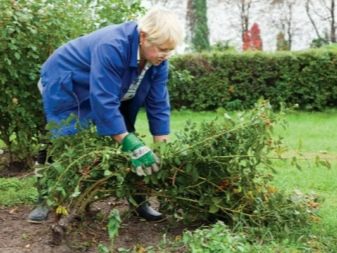
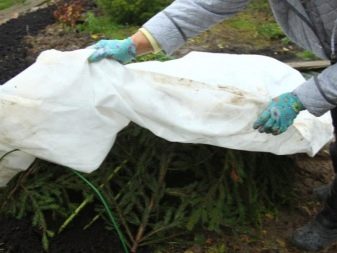
Diseases and pests
Based on the reviews of many domestic and foreign gardeners, it can be stated that the variety in question rarely suffers from pathogenic microflora and invasions of parasites. In some cases, most often due to excess moisture, the plant is faced with the following fungal diseases:
- rust;
- black spot;
- powdery mildew.
Spraying with a mullein or nettle infusion helps to get rid of the first two misfortunes, and ordinary ash helps to cope with the third ailment. A less gentle, but more effective solution is the use of systemic fungicides. Disease prevention provides for the spring treatment of the bush with copper sulfate or Bordeaux liquid.


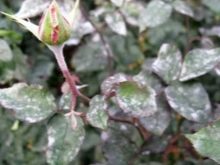
Reproduction
The most popular breeding method for the "Nina Weibul" rose is vegetative, with the following algorithm:
- choose well-formed shoots and cut the cuttings (10 cm each); the lower cut must be performed at an angle of 45 °, and the upper cut parallel to the ground;
- if there are green leaves on the stem, you need to get rid of them, and you should also remove all thorns;
- the lower part of the cutting must be treated with a biostimulant;
- when placing planting material in the ground, it is advisable to maintain a distance of 15 to 25 cm;
- covering the cuttings with a film, it should be borne in mind that it should not come into contact with them; it must be removed regularly - for watering and proper ventilation of the plants.
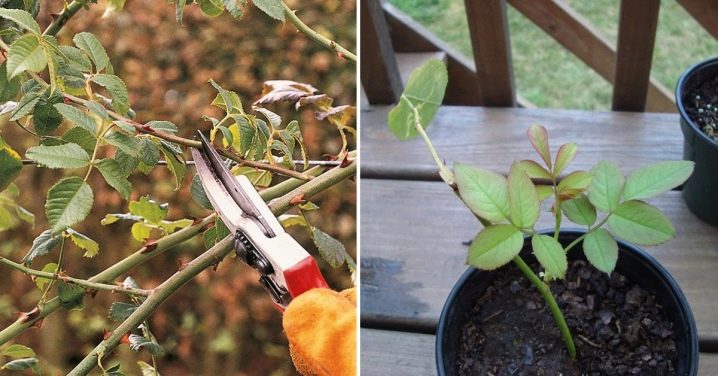
An alternative propagation option for the described rose involves the use of seeds and looks like this:
- the selected material is cleaned of pulp and placed between two cotton pads moistened with hydrogen peroxide, placed in a plastic bag and left in the refrigerator;
- if some seeds become moldy, you need to get rid of them, not forgetting to replace the old cotton pads with new ones;
- after 1.5–2 months, the first shoots appear, which is a signal for the distribution of planting material in individual pots.
Important! In the future, young plants should be provided with 10 hours of illumination, contributing to their accelerated development.
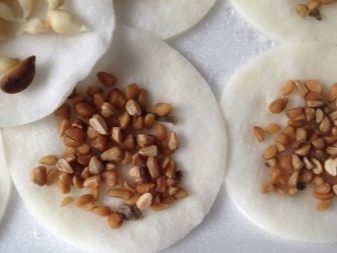
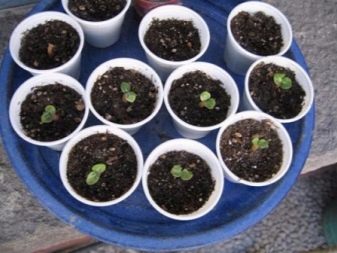
Use in landscape design
Taking into account the decorative characteristics of the presented variety, it should not be surprising that it can decorate almost any landscape. Such bushes look especially advantageous against the background of dark green foliage or needles, as well as in combination with a bell, garden jasmine and petunia. Using the rose "Nina Weibul" in landscape design, you can successfully decorate recreation areas and rock gardens, flower beds and hedges.
Each of these solutions transforms the site with the achievement of an effect that deserves the highest possible appreciation. The rose in question can become a bright accent in any composition you create. She gives positive emotions to each of her owners, which is regularly confirmed in practice.
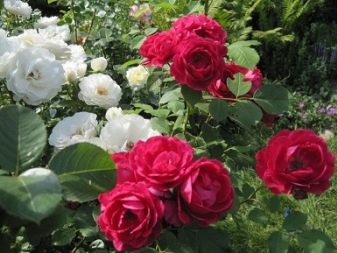
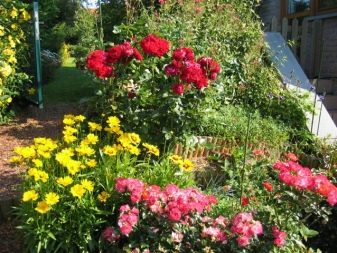
In the next video, you will find a short overview of the Nina Weibul rose.

































































































The comment was sent successfully.